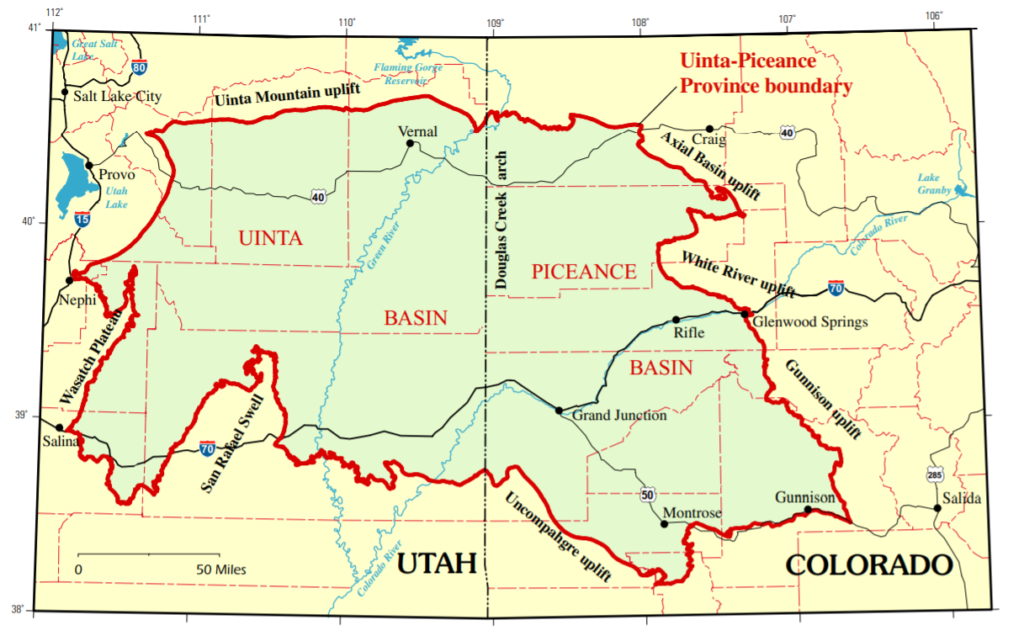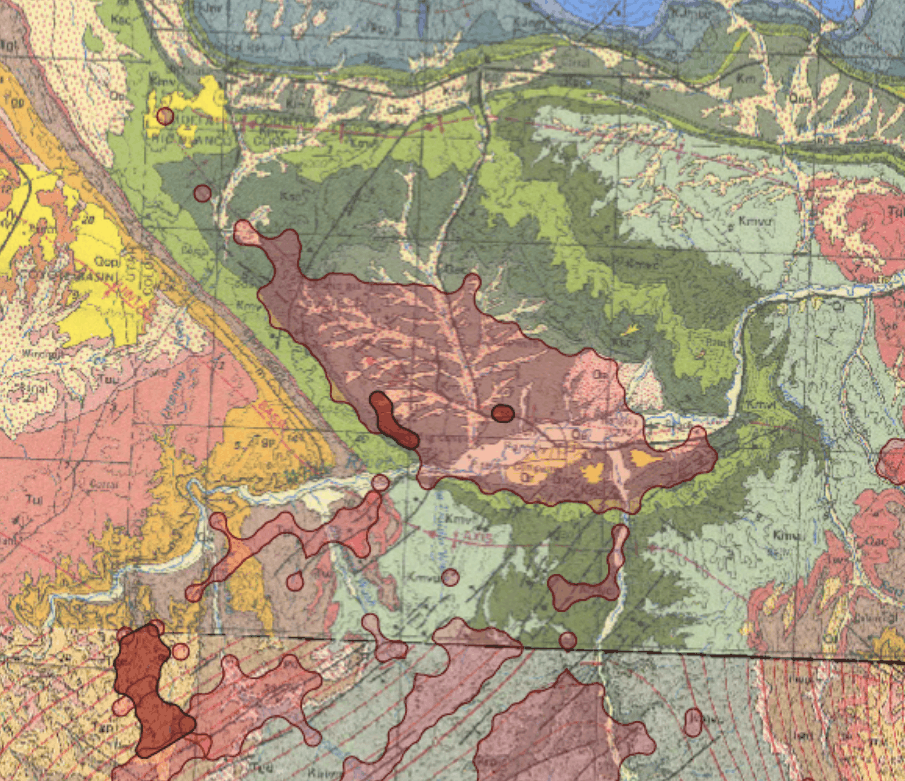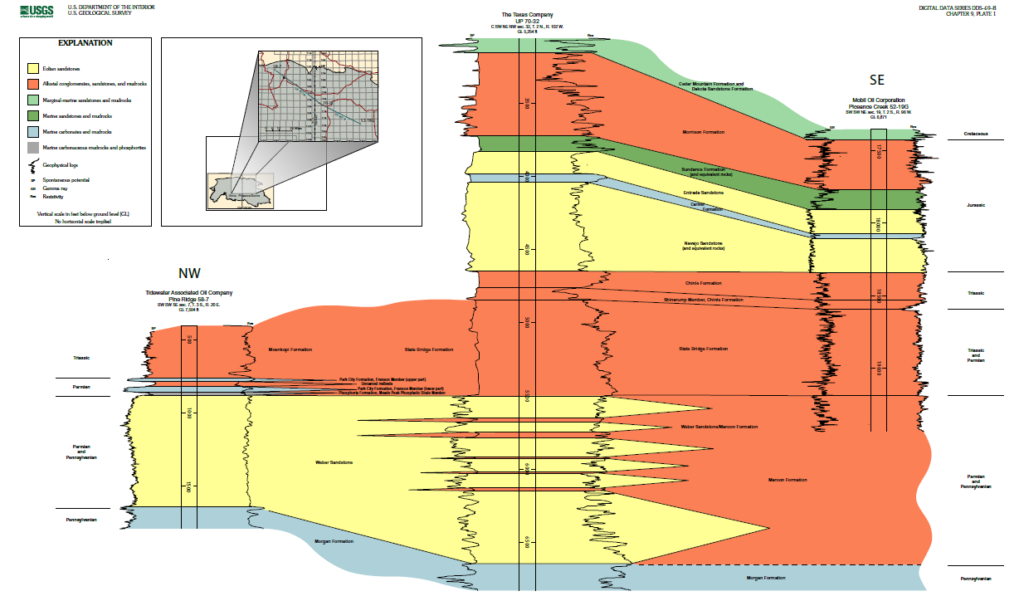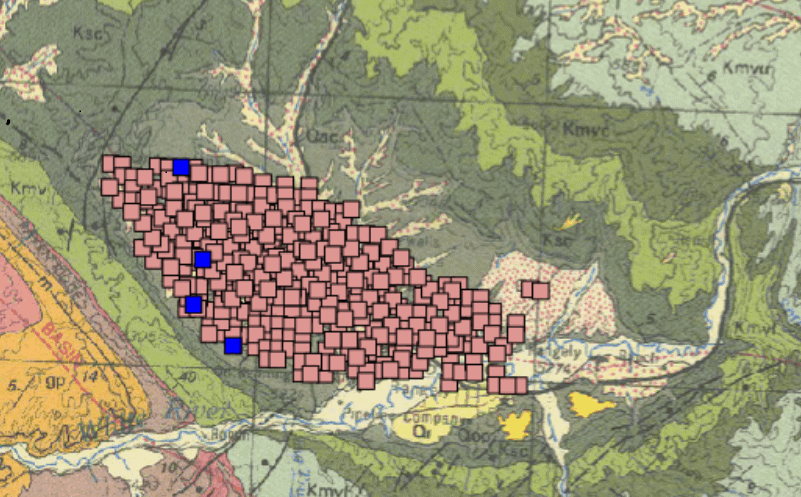Rangely Field
The Rangely Oil Field is located in northwest Colorado within the Uinta-Piceance Basin. It is one of the oldest and largest oil fields in the Rocky Mountain west with an initial estimate of 1.9 billion barrels of oil in place. Chevron originally implemented and maintained secondary and tertiary programs as well as infill drilling to increase recovery of oil in place.1Johnson, E. A. (2003). Geologic assessment of the Phosphoria total petroleum system, Uinta-Piceance Province, Utah and Colorado. Petroleum systems and geologic assessment of oil and gas in the Uinta-Piceance province, Utah and Colorado: US Geological Survey Digital Data Series DDS-69-B, 37. Following almost 90 years of production history in the field, Scout Energy Partners purchased the Rangely Weber Sand Unit and associated facilities in December of 2021 and became the new operator.2Rio Blanco Herald Times. (2021, December 20). Chevron sells Rangely oil field. https://www.theheraldtimes.com/chevron-sells-rangely-oil-field/rangely.

Timeline
The Rangely field was originally identified from oil seeping from the Mancos Formation into the White River. The timeline below lists important events in the history of the field, beginning with the discovery well, until the start of CO2-EOR activities, and finally with the handoff to a new operator.
- 1902: The discovery well was drilled and yielded 10 BOPD.
- 1919: A well drilled to 485 feet produced 150 BOPD.
- 1931: The California Company (Chevron) drilled the Raven A-1 and oil saturated sands from the Weber Formation were tested at 230 BOPD.
- 1944-1946: 182 production wells were drilled.
- 1950: Produced gas injection began to maintain reservoir pressure.
- 1958: Full-scale water flood was initiated in response to continuing declines in reservoir pressures. Peak production was 82,000 BOPD.
- 1963: Infill drilling on 20-acre spacing started.
- 1984-1986: Infill drilling on 10-acre spacing occurred.
- 1986: Tertiary recovery was initiated using CO2-EOR.3Johnson, E. A. (2003). Geologic assessment of the Phosphoria total petroleum system, Uinta-Piceance Province, Utah and Colorado. Petroleum systems and geologic assessment of oil and gas in the Uinta-Piceance province, Utah and Colorado: US Geological Survey Digital Data Series DDS-69-B, 37.
- 2021: Scout Energy Partners purchased the field from Chevron and became the new operator.4Rio Blanco Herald Times. (2021, December 20). Chevron sells Rangely oil field. https://www.theheraldtimes.com/chevron-sells-rangely-oil-field/rangely.
Rangely Geology
The Rangely Field is located along an asymmetrical anticline trending northwest to southeast along the north plunge of the Douglas Creek Arch. Although multiple formations are part of the petroleum system, the major oil production occurs from the Pennsylvanian to Late Permian Weber Formation.5Johnson, E. A. (2003). Geologic assessment of the Phosphoria total petroleum system, Uinta-Piceance Province, Utah and Colorado. Petroleum systems and geologic assessment of oil and gas in the Uinta-Piceance province, Utah and Colorado: US Geological Survey Digital Data Series DDS-69-B, 37.

The Weber is primarily an aeolian deposit, with cross-laminated dunes, separated by fluvial stringers. Major productive lithofacies have an average porosity of 12%. The fluvial deposits form permeability barriers between the aeolian pay zones.6Johnson, E. A. (2003). Geologic assessment of the Phosphoria total petroleum system, Uinta-Piceance Province, Utah and Colorado. Petroleum systems and geologic assessment of oil and gas in the Uinta-Piceance province, Utah and Colorado: US Geological Survey Digital Data Series DDS-69-B, 37.

Enhanced Oil Recovery
Secondary and tertiary production at the Rangely Field includes water flood, CO2 injection and a process of alternating between water and gas injection. Secondary recovery through waterflooding was estimated to recover 43% of original oil in place.7Johnson, E. A. (2003). Geologic assessment of the Phosphoria total petroleum system, Uinta-Piceance Province, Utah and Colorado. Petroleum systems and geologic assessment of oil and gas in the Uinta-Piceance province, Utah and Colorado: US Geological Survey Digital Data Series DDS-69-B, 37.
CO2 injection increases oil recovery through several mechanisms. Reduced oil viscosity makes it less resistant to flow. The increased gas pressure pushes oil through the rock towards the producing well. CO2-EOR is expected to add an additional 118 MMBO oil production. The operator alternates the injection of water and gas, called WAG, to create a process that is more efficient in sweeping oil to producing wells.8Johnson, E. A. (2003). Geologic assessment of the Phosphoria total petroleum system, Uinta-Piceance Province, Utah and Colorado. Petroleum systems and geologic assessment of oil and gas in the Uinta-Piceance province, Utah and Colorado: US Geological Survey Digital Data Series DDS-69-B, 37.

Field Summary
The total production in the field has surpassed 900 MMBO. In 2016 the Rangely Field produced 11,000 BOPD and 1,200 BPD NGLs. Water and CO2 produced with the oil and NGLs are treated and re-injected.9Colorado Oil and Gas Conservation Commission, Mapguide, Geology and Underground Disposal and Enhanced Oil Recovery Wells. 1:250,000 scale USGS geologic maps, oil & gas wells, including permitted, historic and abandoned locations. Accessed 11/1/2020.
Concerns
A number of concerns related to geology, engineering applications and field operations are important to monitor in the field. The CO2 used in tertiary recovery reacts with water to form carbonic acid necessitating equipment with significant corrosion resistance, which increases operating costs. Colorado Oil and Gas Conservation Commission records indicate the Rangely Field experienced 839 reportable spills from 1995-2020. The majority occurred in flowlines and water gathering pipelines.10Colorado Oil and Gas Conservation Commission, Mapguide, Geology and Underground Disposal and Enhanced Oil Recovery Wells. 1:250,000 scale USGS geologic maps, oil & gas wells, including permitted, historic and abandoned locations. Accessed 11/1/2020.
Images: “CO₂ Injection and Canola” by Top Energy Training


